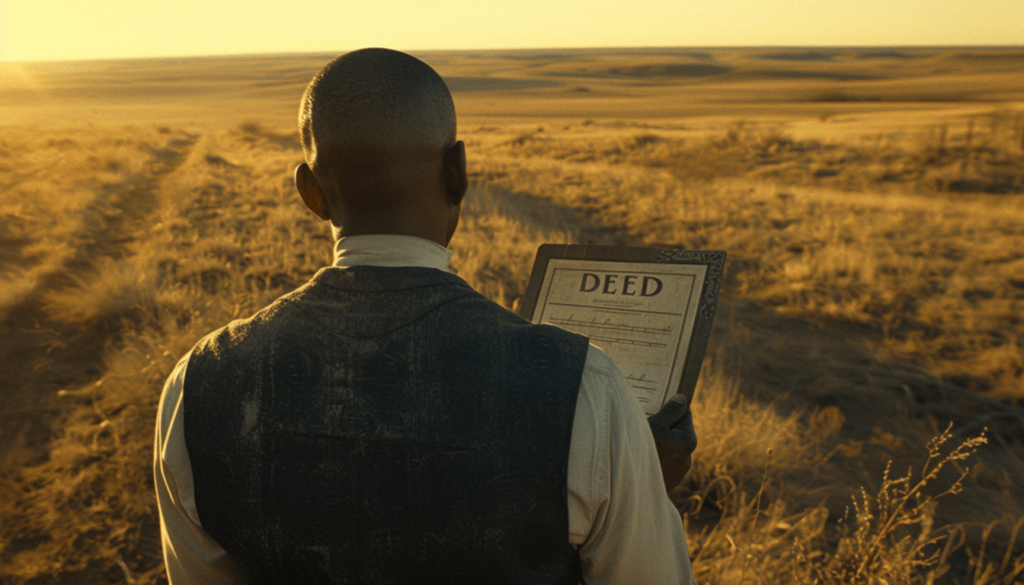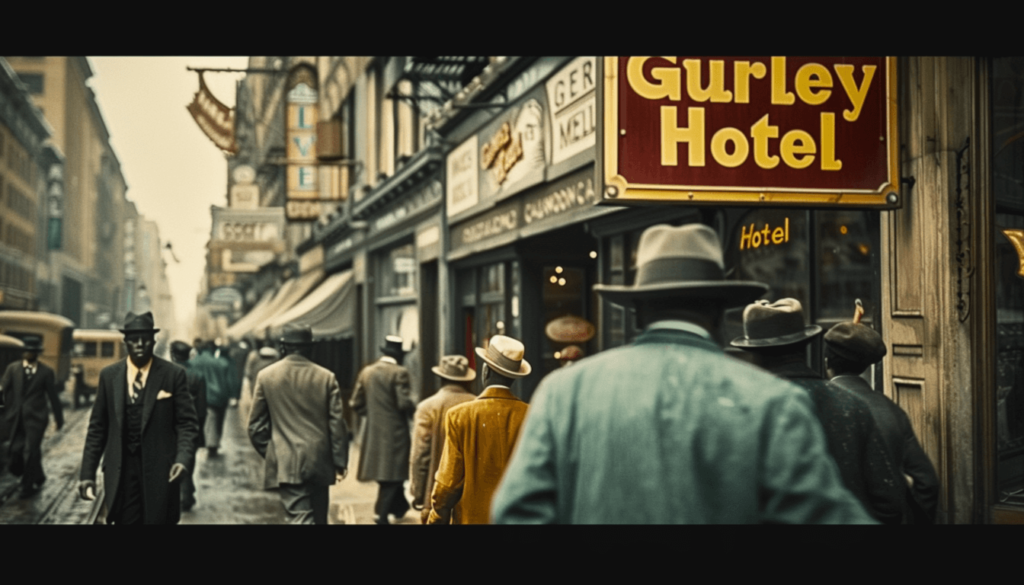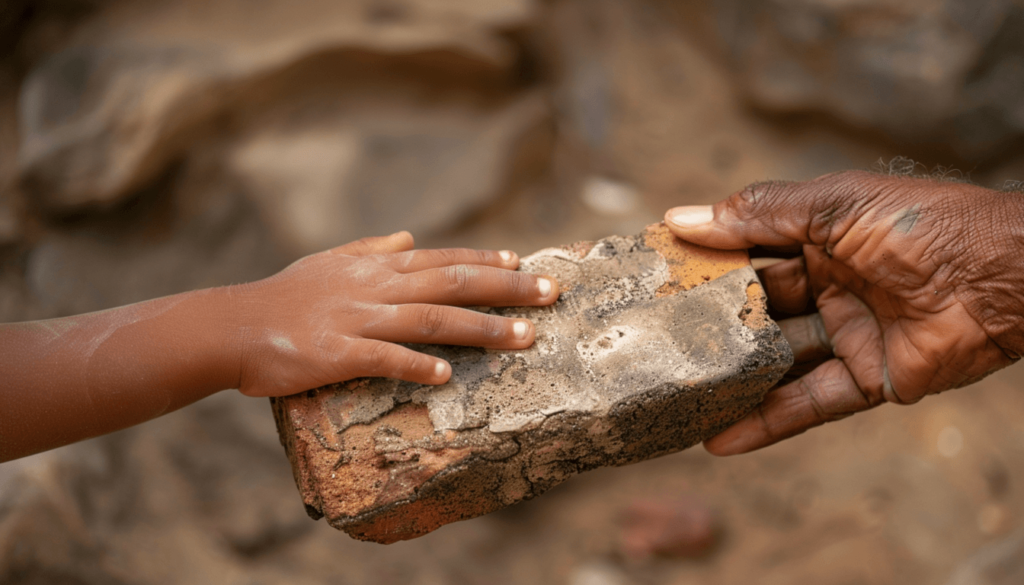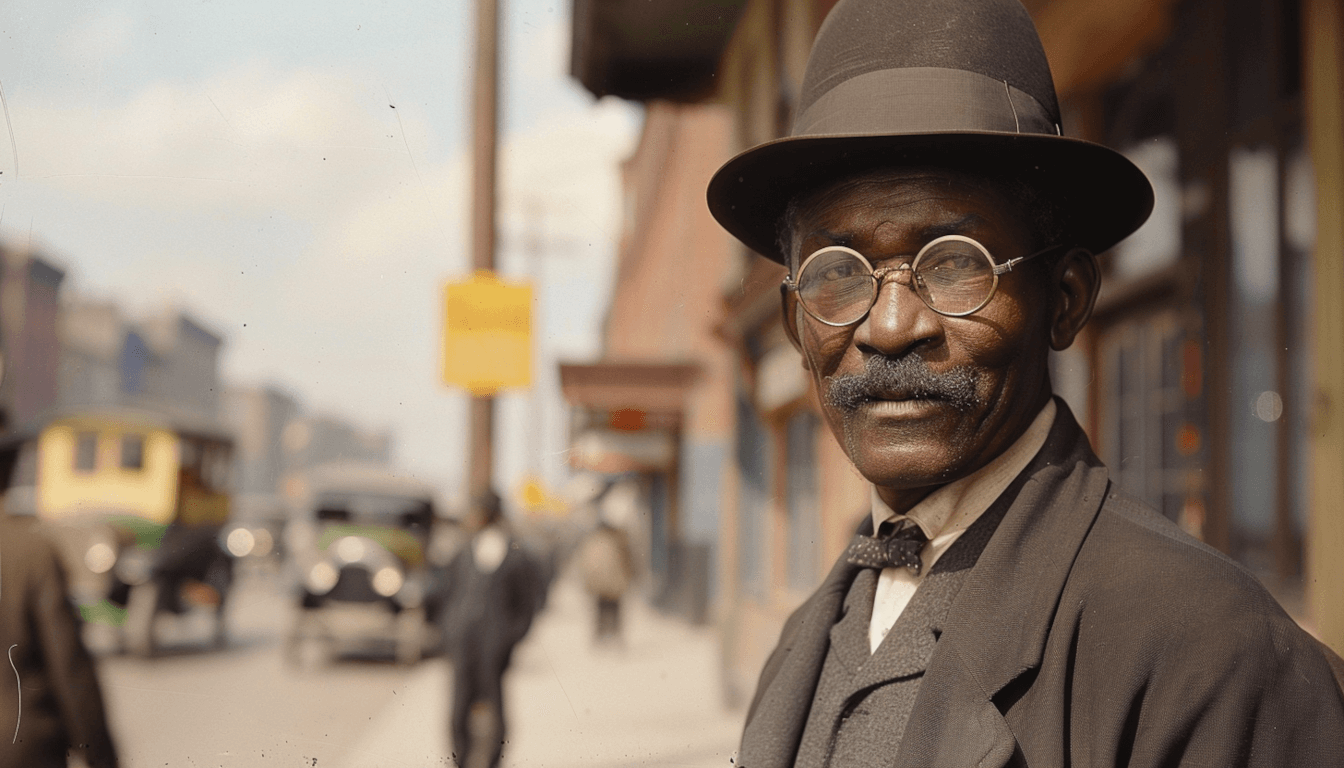Ottowa W. (O.W.) Gurley was a pioneering entrepreneur, philanthropist, and visionary whose determination to create opportunities for African Americans redefined the possibilities of economic empowerment. As the architect behind Greenwood, Tulsa—famously known as Black Wall Street—Gurley’s leadership transformed a plot of land into a thriving community that stood as a testament to resilience and ingenuity.
His legacy is deeply connected to the broader story of Black entrepreneurship and resilience, as explored in Building Black-Owned Businesses: Then and Now.
Amid systemic racism and segregation, Gurley’s efforts laid the foundation for one of the most prosperous Black communities in American history. This article delves into his life, the building of Greenwood, and the enduring lessons his legacy imparts for future generations.
O.W. Gurley’s Early Life and the Vision Behind Black Wall Street
Born to formerly enslaved parents in Huntsville, Alabama, in 1868, O.W. Gurley was raised in an era marked by both newfound freedoms and entrenched systemic barriers for African Americans. Witnessing the challenges of Reconstruction, Gurley developed a deep resolve to create opportunities for his community that transcended the limitations imposed by segregation and racism.

Gurley’s early career reflected his dedication to self-improvement and service. After earning a teaching certification, he became an educator, instilling knowledge and ambition in the next generation. He later transitioned to a position as a postal clerk, a role that offered stability and respectability in a time when opportunities for African Americans were scarce. However, Gurley’s entrepreneurial spirit and vision for economic independence soon led him to seek greater impact through business and real estate ventures.
Gurley’s experiences as a teacher and postal clerk provided him with a unique perspective on the importance of stability, education, and financial opportunity. These insights would later drive his ambitious efforts to establish Greenwood as a thriving enclave of Black prosperity.
Greenwood’s Origins: The Creation of Black Wall Street
In 1906, O.W. Gurley made a transformative decision to purchase 40 acres of land in Tulsa, Oklahoma, with the vision of creating a thriving, self-sufficient community for African Americans. At a time when systemic segregation limited opportunities for Black families, Gurley’s bold initiative provided a pathway to economic independence and communal prosperity.

Key Contributions:
- Pioneering Real Estate Development: Gurley’s acquisition of land was not merely a financial investment but a foundational act of community building. He strategically developed housing and commercial properties, which attracted Black families and entrepreneurs to Greenwood, creating a vibrant economic ecosystem.
- Building Infrastructure for Growth: Among his notable projects was the establishment of essential infrastructure, including grocery stores, lodging, and other businesses. These ventures not only met the needs of Greenwood’s residents but also inspired others to invest in the district.
- Fostering Opportunity: Gurley’s commitment extended beyond real estate. He provided financial support, mentorship, and guidance to African Americans relocating to Greenwood, ensuring that newcomers had the resources to establish businesses and homes. This holistic approach cemented Greenwood’s reputation as a place of opportunity and innovation.
Through his vision and leadership, Gurley laid the groundwork for Greenwood’s emergence as Black Wall Street, an enduring symbol of resilience, entrepreneurship, and collective success.
Gurley’s decision to purchase 40 acres of land in Tulsa laid the foundation for what would become Greenwood. His vision for a self-sustaining Black community was unprecedented at the time. For a detailed chronology of Tulsa’s development and Greenwood’s rise, visit the Tulsa Historical Society’s ChronoTulsa Timeline.
Greenwood’s Rise: The Birth of Black Wall Street
Under O.W. Gurley’s visionary leadership, Greenwood evolved into a vibrant epicenter of African American economic and cultural life by the 1910s. Known as Black Wall Street, the district became a testament to the power of entrepreneurship and community collaboration in overcoming systemic barriers.

Economic Flourishing: Greenwood boasted over 300 Black-owned businesses, including banks, theaters, medical practices, restaurants, and schools. Gurley’s emphasis on self-reliance encouraged residents to reinvest within the community, creating a self-sustaining economy. These businesses provided essential services, created jobs, and empowered families to build generational wealth.
Cultural Significance: Beyond its economic achievements, Greenwood was a symbol of pride, progress, and resilience for African Americans nationwide. The district’s success defied the pervasive racism of the era, demonstrating what could be achieved through vision, hard work, and unity. Gurley’s leadership fostered a culture of mutual support and innovation, making Greenwood a beacon of hope.
An Ecosystem of Opportunity: Gurley’s approach to community building extended beyond financial growth. By providing opportunities for education, mentorship, and entrepreneurship, Greenwood became more than a collection of businesses—it was a thriving ecosystem where individuals could achieve their full potential.

The rise of Greenwood under Gurley’s guidance stands as a powerful reminder of what collective effort and strategic investment can accomplish, even in the face of systemic challenges.
Gurley’s land investments and civic planning laid the groundwork for a thriving Black business district. For a deeper look at his contemporaries, see J.B. Stradford: The Visionary Behind Black Wall Street.
As Greenwood flourished, it became a symbol of Black excellence and economic independence. Gurley’s contributions were instrumental in shaping this legacy. For guidance on researching the Tulsa Race Massacre and accessing primary sources, visit the Library of Congress guide to researching the 1921 Tulsa Race Massacre.
Greenwood Under Siege: The Tulsa Race Massacre and Its Aftermath
Despite its extraordinary prosperity, Greenwood’s success also made it a target for racial hostility and economic envy. By the early 1920s, tensions between the thriving Black community and the surrounding white population had reached a boiling point. These tensions culminated in the 1921 Tulsa Race Massacre, a devastating event that brought Greenwood’s prosperity to a tragic halt.

The Massacre: On May 31 and June 1, 1921, a white mob descended upon Greenwood, incited by a racially charged incident and fueled by deep-seated prejudice. Over the course of 18 hours, homes, businesses, and institutions were looted and burned to the ground. The destruction included many of O.W. Gurley’s properties, which had been integral to Greenwood’s economic ecosystem.
Impact on Gurley and the Community:
- Gurley lost significant wealth and property during the massacre, marking a devastating personal and professional setback. However, his pioneering work in Greenwood had already set a foundation of resilience within the community.
- The massacre displaced thousands of residents, leaving them homeless and without livelihoods. It obliterated decades of economic progress and created lasting trauma for survivors.
Gurley’s Response: Despite the immense losses, Gurley remained committed to supporting Greenwood’s recovery. He continued advocating for rebuilding efforts, believing in the resilience of the community he had helped establish. While the district faced monumental challenges in the aftermath, his foundational contributions enabled a partial recovery in the years that followed.
The Tulsa Race Massacre stands as a stark reminder of the systemic barriers Black communities have faced in their pursuit of prosperity. Yet, the legacy of Greenwood’s rise and Gurley’s leadership continues to inspire efforts to rebuild and advance economic equity.
Black Wall Street’s Enduring Legacy and the Lessons We Must Learn
O.W. Gurley’s contributions to Greenwood illustrate the transformative impact of visionary leadership and collective effort. His determination to create an environment where African Americans could achieve economic independence set a powerful precedent for community-building and resilience.

Enduring Lessons:
- The Power of Ownership: Gurley’s investment in land and property not only created wealth but also empowered individuals and families to build generational stability. His focus on ownership remains a cornerstone of economic empowerment.
- Leadership Rooted in Community: Gurley’s inclusive approach to leadership demonstrated the importance of uplifting others to achieve collective success. By fostering opportunities for education, business, and mentorship, he built a thriving ecosystem that inspired progress.
- Resilience in the Face of Adversity: Even after the devastation of the Tulsa Race Massacre, Gurley’s foundational work in Greenwood enabled the community to begin rebuilding. His story underscores the importance of perseverance and the enduring spirit of hope.
Gurley’s legacy is not just a testament to his individual achievements but also a blueprint for building equitable communities. His life’s work continues to inspire modern efforts to overcome systemic barriers and create spaces where all can thrive.
Gurley’s impact continues to resonate through survivor stories and federal acknowledgment. Explore firsthand accounts in Personal Stories from the Survivors of Black Wall Street and policy reflections in Justice Department’s Report on the Tulsa Race Massacre.
Gurley’s legacy continues to inspire modern movements for Black economic empowerment. For a powerful firsthand account of the Tulsa Race Massacre and its impact on Greenwood, read the Smithsonian Magazine feature on a long-lost eyewitness manuscript.
Carrying Forward the Legacy of O.W. Gurley
O.W. Gurley’s vision for Greenwood was not just about economic prosperity—it was about creating a community rooted in dignity, resilience, and opportunity. His efforts to establish Black Wall Street set a precedent for what is possible when leadership, collaboration, and strategic investment come together.
By reflecting on Gurley’s legacy, we are reminded of the importance of ownership, community-centered leadership, and resilience in the face of adversity. These principles remain as relevant today as they were during Greenwood’s rise to prominence. Gurley’s story serves as a blueprint for building equitable communities that prioritize economic independence and collective progress.
To learn more about O.W. Gurley and the history of Black Wall Street, visit resources like the Tulsa Historical Society and Museum and the Greenwood Rising History Center. These institutions provide valuable insights into the legacy of Greenwood and its contributions to American history.
Honoring O.W. Gurley’s contributions requires not only celebrating his achievements but also applying the lessons of his leadership to modern challenges. Through these efforts, we can continue to build on the foundation he laid, fostering a future where equity and opportunity are accessible to all.
Related Articles
- Founders and Visionaries of Black Wall Street – Meet the leaders who shaped Greenwood’s legacy of prosperity and resilience.
- J.B. Stradford: The Visionary Behind Black Wall Street – Discover Stradford’s legal advocacy and entrepreneurial leadership in Greenwood’s rise.
- Personal Stories from the Survivors of Black Wall Street – Hear firsthand accounts of survival, resistance, and the ongoing fight for justice.
- Justice Department’s Report on the Tulsa Race Massacre – Federal reflections on historical accountability and future reconciliation.
External References
- Tulsa Historical Society: ChronoTulsa Timeline – A detailed chronology of Tulsa’s history, including the events surrounding the 1921 massacre.
- Library of Congress: How to Research the 1921 Tulsa Race Massacre – Guidance on accessing primary sources and historical records related to the massacre.
- Smithsonian Magazine: Eyewitness Account of the Tulsa Race Massacre – A recovered manuscript offering firsthand testimony of the violence and destruction.
- Tulsa Historical Society and Museum – Archival resources, exhibits, and educational materials on Tulsa’s Black history.
- Greenwood Rising History Center – A community-led museum honoring the legacy of Black Wall Street and its survivors.
